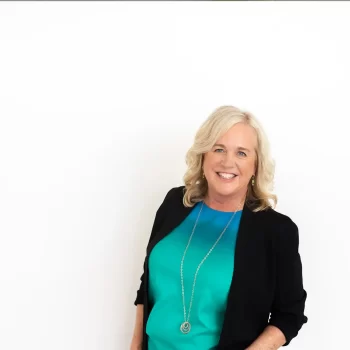What is the customer lifecycle?
The Customer Lifecycle helps you figure out not only how your business is going to get customers, but how you’re going to keep them. Customer retention is a BIG part of marketing strategy, but it tends to get overlooked.
The blogosphere throws out statistics and infographics by the terabyte, but when you drill down to find the supporting data it’s based on 20-year-old studies or extremely narrow industry sectors. Bottom line: It’s a little sketchy to extrapolate it.
But if you put all the stats and studies together, you can get a picture of a range that’s mind blowing. The general consensus is that:
- Acquiring a new customer is between five and 25 times MORE expensive than retaining a loyal one.
- And, increasing retention rates by 5% can INCREASE PROFITS by 25%-95%.
Whoa!
So maybe we should give that Customer Lifecycle framework a little more attention.
Stages of the Customer Lifecycle
The Customer Lifecycle is the evolution of the sales funnel. But it represents a refreshing way of looking at customers. Not just as people or companies who buy from you one time, but as relationships that can be built and that endure over time.
Here are the basic stages:
- Awareness – This is how your customers realize they have a problem that needs a solution.
- Discovery – This is how your customers find out about you. If you’re online, that discovery often starts with a search and a visit to your website.
- Consideration – This is when a customer learns more about you and your product and determines whether or not it meets their needs.
- Conversion/Sale – This is when the customer or client actually gives you their credit card.
- Customer Relationship – This is the experience the customer has with your company and your product post sale and includes customer service, fulfillment, how well the product met their expectations and needs etc.
- Customer Retention/Advocacy – When the customer buys your product again and/or refers other people to you.
How Can I Use The Customer Lifecycle Framework?
You can use the Customer Lifecycle framework in two ways:
- As the template for the customer journey map. It will help think through what marketing tactics you can use depending on WHERE your customer is on their way to becoming a brand advocate. I thought this was a great infographic on the best marketing tactics for acquisition and retention. Spoiler alert! The most used method for retention is email marketing.
- if your company has been around long enough to generate some data, it can help you figure out WHEN you can expect to have money in the bank.
Using the Customer Lifecycle to Inform Marketing Strategy
Once you have some basic data about your business – 6-12 months worth – you can use that to get creative with your marketing strategy. Here’s an example of how it might work with a fictional digital business called CoolSite:
Let’s say on average, CoolSite gets about 500 visits a month. And generates about 25 sales a month. Then CoolSite can have the expectation that as long as it sustains site traffic of 500 visits per month, it can project about 25 sales per month — a 5% conversion rate.
Let’s say CoolSite wants to increase sales. One way would be to focus on increasing the number of site visits. So they employ advertising and amp up their social media strategy and start getting 600 visits a month. The next question they need to ask is did sales increase accordingly? The hypothesis might be that if the conversion rate stays the same, CoolSite should now have 30 sales per month.
Or maybe CoolSite decides efforts are better spent trying to increase the conversion rate to 6%. So they rewrite their landing pages and launch an email nurturing sequence. If it’s successful, those same 500 visits will now generate 30 sales.
The decision about whether CoolSite should focus on increasing site visits or increasing your conversion rate is specific to the specifics of the individual business and the industry.
If you’re thinking about your own business and you’ve never done any optimizing, I recommend you start with trying to increase your conversion rate because it’s closer to the credit card decision point. It’s usually easier to convince someone who abandoned their cart than someone who’s landing on your site for the very first time.
Closing the Customer Lifecycle Retention Loop
Finally, as you’re thinking about your marketing strategy, remember that your job isn’t done at the first purchase point. I’ll refer you back to the research that started this article. Make sure that you use each sale as an opportunity to create a relationship with that customer so that they will buy again or tell their friends about you. That means:
- you ask them to opt into your newsletter during the checkout process.
- your product delivers (preferably over delivers) on all it’s promises.
- the entire experience from onboarding to customer service to delivery is delightful.
It’s Time To Create Your Marketing Strategy
This post on the Sales Lifecycle is part of my three part series on tools you can use to develop your marketing strategy. As a refresher:
Making a customer persona helps you think through WHO is your ideal customer and WHY they want/need your product or service.
Making a customer journey map helps you think through HOW your customer discovers your product or service, and WHAT tactics you can use to help them make a purchase decision.
Figuring out WHERE your customers are in the customer lifecycle helps you understand WHEN you can expect revenue.
More Resources
Working on your marketing game? Here are some resources that might help.
How To Create an Effective Marketing Plan in 2023
8 Secrets to Good Consistent Money




